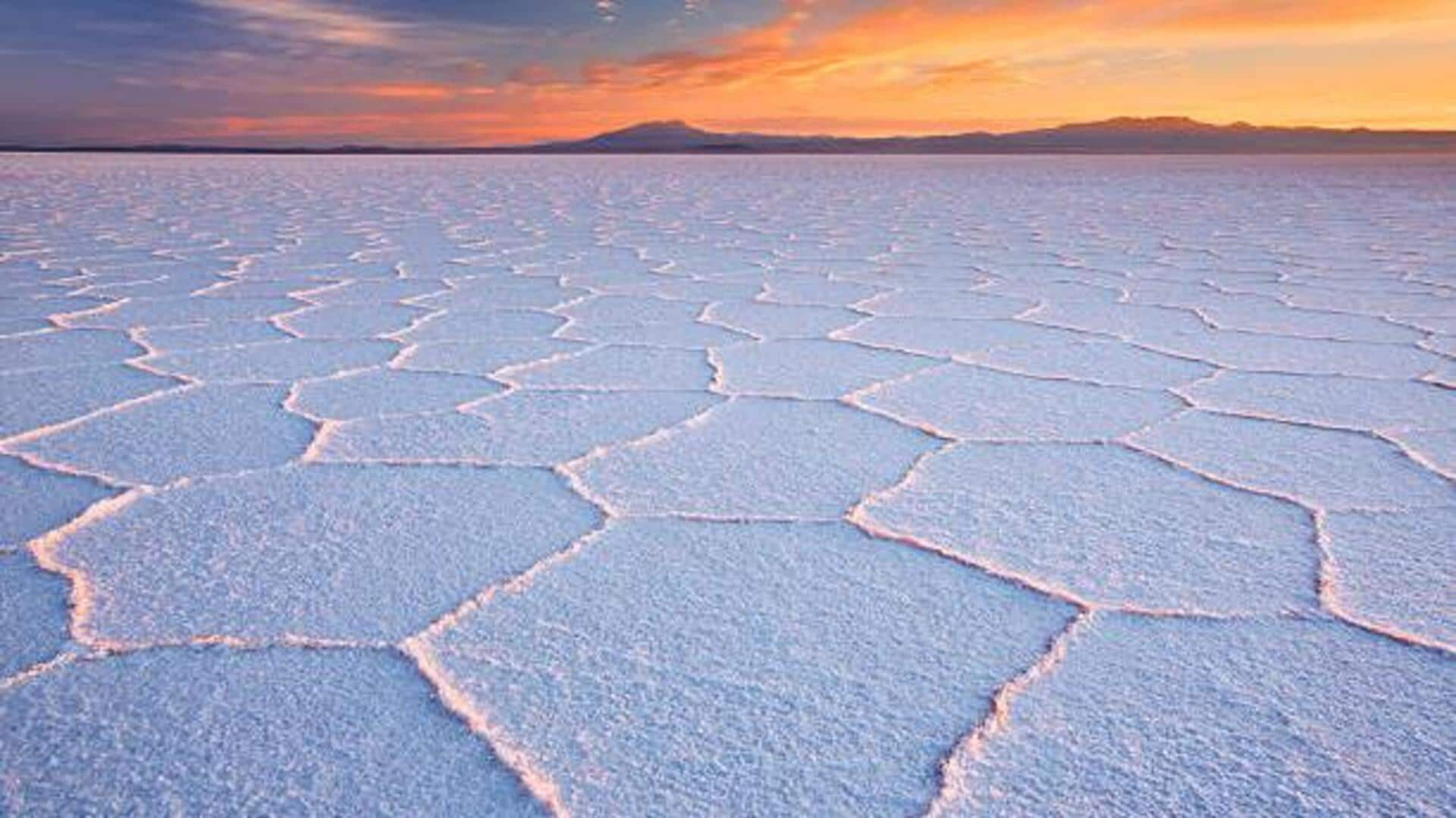
For photography enthusiasts: How to capture salt flats
What's the story
Offering a unique landscape for adventure photography, salt flats provide vast, reflective surfaces that create stunning visual effects. These natural wonders, found across various parts of the world, attract photographers hoping to capture their surreal beauty. The expansive, flat terrain and often clear skies make them ideal for creative compositions and experimenting with light and reflections. Here are some insights into exploring salt flats for your next photography adventure.
Timing
Best time to visit salt flats
The best time to visit salt flats is during the dry season when the ground is firm and accessible. This time varies by location but usually falls between May-October in many places. During this period, you can capture the intricate patterns formed by dried salt crystals. However, visiting just after a rain shower can also give you chances to photograph mirror-like reflections on the water-covered surface.
Equipment
Essential gear for salt flat photography
When photographing salt flats, ensure that you carry a wide-angle lens to capture the vastness of the landscape. A tripod is important for stability during long exposure shots, particularly at the time of sunrise or sunset when lighting conditions shift quickly. Polarizing filters can assist with reflections and colors in your images. Also, protective gear like lens covers will protect your equipment from salty residue.
Techniques
Creative techniques to try
Experimenting with perspective is key when shooting salt flats given their endless horizons. Use leading lines made by natural formations or footprints to draw viewers into your images. Playing with scale by including people or objects can add interest and context to your photos. Long exposure techniques can also be used creatively during twilight hours to capture movement in clouds or stars against the static landscape.
Safety
Safety tips while exploring salt flats
While exploring salt flats, it's important to stay hydrated as these areas can be extremely dry and hot during daytime hours. Wearing sunscreen and protective clothing will shield you from intense sunlight reflected off the white surface. Always inform someone about your travel plans before heading out since cell reception may be limited in remote locations. Carrying a map or GPS device ensures you remain oriented while navigating these expansive terrains.